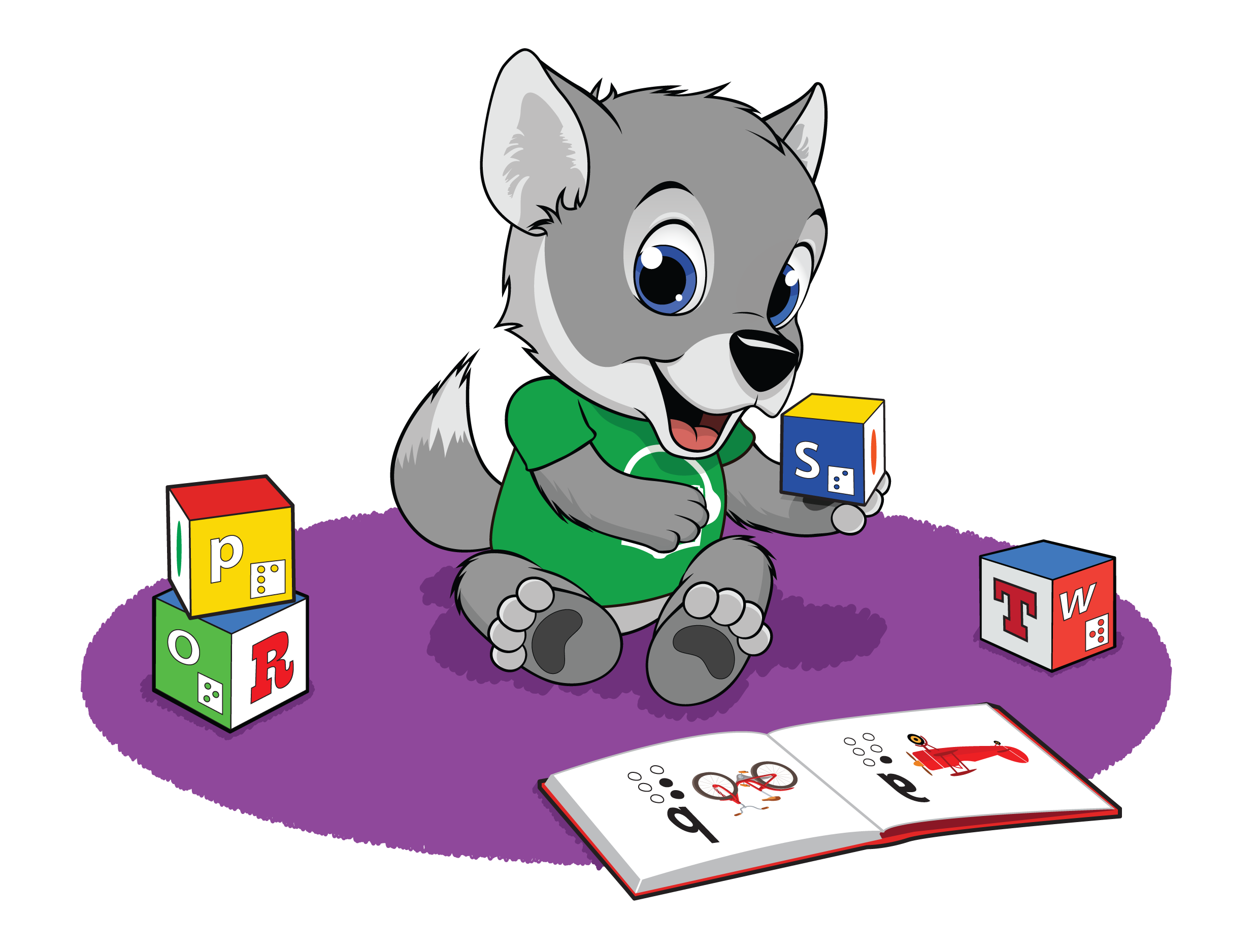That All Children May Read Early Literacy Program

About the Letters and Dots Skill
It is important for children to recognize that letters, numbers, or braille dots have meaning. They will also need to comprehend that letters or braille dots represent sounds. Children can then start putting them together to make words. A child with a visual impairment benefits from feeling letters or dots. This provides another method of learning about language.
Letters and Dots Recommended Readings
Letters and Dots Activities
Babies (Birth through One)
- Read a simple alphabet book to your baby. Make sure to elaborate on the letters and pictures. For example: An alphabet book might have a page that says “T is for toy.” Talk about how your child loves playing with their toys, and mention several toys that begin with “T” like “truck” or “tambourine.”
- When reading a print/braille book, guide your baby’s fingers across the bumps. If you have blocks with raised letters, you could also guide your baby’s fingers over the letter. Make sure to name the letter they are touching in either situation.
- Playing with shapes and letter blocks or magnetic letters allows your baby to understand that different shapes have different meanings. A round shape could be a circle, but if it has a hole in the middle, it is the letter “O.”
Toddlers (Two through Three)
- As your toddler plays with letter blocks, interact with them by talking about the letter in their hand.
- Sing the alphabet song to your toddler. As they learn it, encourage singing along. Make sure to sing it slowly the first few times.
- Read print/braille books and let your toddler follow along by touching the braille as you read.
Preschoolers (Four through Six)
- Knowing numbers is just as important as learning the alphabet. Read a counting book with your preschooler.
- While reading books with your preschooler, especially alphabet books, sound out the first letters of the words. For example, with an alphabet book, you would name the letter, make the sound of the letter, and then say the word or words that start with that letter.
- Have your preschooler play with letters by making dots and or letters in sand, foam, rice, or whipped cream.